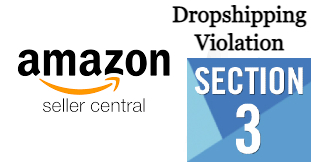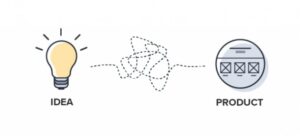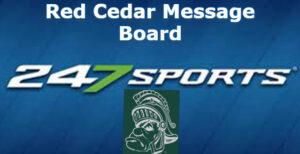
Section-3 Dropshipping Violation
Hello, I am here to share with you a guide on how to protect your Amazon seller account from section-3 dropshipping violation.
In this article, we will discuss the following:
– What is section-3 dropshipping?
– What are the risks of section-3 dropshipping?
– How can you protect your Amazon seller account from section-3 dropshipping violation?
What is Section 3 Dropshipping?
Section 3 of the Amazon Seller Regulations states that any person who engages in the business of selling products through an online marketplace, such as Amazon, must comply with certain requirements. One of these requirements is that the seller must have a valid legal entity in the United States in order to sell products on Amazon. This requirement is known as “section 3 compliance.”
What are the Risks of Section-3 Dropshipping?
There are a few risks associated with section-3 dropshipping. The first risk is that you may run into legal issues if you don’t comply with the requirements of section 3. For example, if you don’t have a valid legal entity in the United States, you may be violating federal
Section-3 Dropshipping Violations
If you are an Amazon seller, there is a chance that you may be violating Amazon’s section-3 dropshipping policy. Section-3 dropshipping violations can lead to the suspension of your seller account.
Here are some tips to help protect your Amazon seller account from section-3 dropshipping violations:
1. Make sure that your products are properly marked as “dropshipped”. This will help to confirm that your products are being sold through a third party rather than through your own Amazon account.
2. Do not sell products that you do not own or control yourself. This includes selling products that you have received as a gift or purchase from another person.
3. Do not sell products that are in violation of Amazon’s policies or regulations. This includes items that are counterfeit, stolen, or illegally acquired.
4. Do not use false or misleading statements to promote your products on Amazon. This includes using fake reviews or making false claims about the quality of your products.
5. Do not engage in any illegal activities to promote your products on Amazon. This includes using spamming, blackhat tactics, or other illegal methods to promote your
How to detect section-dropshipping violations
One of the most common violations that Amazon sellers experience is section-dropshipping. This involves selling products through Amazon without having a physical store set up. Essentially, this means that the seller is using Amazon to sell products that they would not be able to sell through their own store.
To detect section-dropshipping violations, Amazon uses a number of different methods. First, it looks at how many products the seller is selling from each category. If the seller is selling too many products from a single category, this may indicate that they are using Amazon as their sole source of income. Second, it examines how many different suppliers the seller is using. If the seller only uses a small number of suppliers, this may also be an indication of section-dropshipping.
If you are suspecting that your Amazon account has been violated, there are several steps you can take to verify your suspicions. First, you can review your sales data to see if there are any patterns that suggest you have been violating the terms of service. Second, you can contact Amazon support to ask them about your situation. They will be able to help you understand what behavior is prohibited and how to avoid being penalized for it.
How to protect your amazon seller account from section-dropshipping violations
1. To protect your amazon seller account from section-dropshipping violations, you first need to be aware of the signs that your account is being violated.
Some of the most common signs that your amazon seller account is being violated are when products are being sold at a significantly higher price than what is listed on the product page, or when products are being sold without being registered with amazon.com.
To prevent section-dropshipping violations from happening, it is important to take action if you notice any of these signs. This includes reporting the violation to Amazon, filing a dispute with Amazon, and blockshipping the violator. by doing this, you can protect your amazon seller account and ensure that your sales remain legitimate.
Why are Amazon Sellers Being Targeted by Section-3?
Selling on Amazon is a great way to make money. It’s also a popular route for hobbyists and small businesses who want to get into online retail. However, it’s important to remember that Amazon is a marketplace, not a store. This means that you are responsible for the products that you list and sell on Amazon.
If you violate Amazon’s policies, your seller account may be suspended or closed. This can damage your reputation and business. In some cases, it can also lead to fines and other legal penalties.
Here are four common violations that can lead to section-3 penalties:
Violating listing policies: You must follow all of the listing policy guidelines when you list your products on Amazon. For example, you must include all of the required information in your product listings, and you must not list any duplicates or false information about your products. If you violate these guidelines, Amazon may suspend or close your seller account.
You must follow all of the listing policy guidelines when you list your products on Amazon. For example, you must include all of the required information in your product listings, and you must not list any duplicates or false information about your products
What are the Different Types of Violations that Amazon Seller Accounts can be Found In?
There are a number of different types of violations that Amazon seller accounts can be found in. Some of the most common violations include:
– Section- dropshipping: This is the most common type of violation, and it occurs when a business sells products through Amazon without having a physical store. This means that the products are sold through Amazon’s marketplace, not directly from the seller’s own inventory.
– FBA: This stands for “factory-direct selling.” It’s a type of selling where products are shipped directly from the manufacturer to the customer. FBA is usually more expensive than selling through Amazon’s marketplace, but it offers sellers more control over their product distribution.
– Selling counterfeit products: This is a very serious violation, and it can ruin a seller’s reputation. It happens when someone sells products that are not genuine or are counterfeit versions of brand name products.
– Unauthorized use of Amazon trademarks: This happens when someone uses trademarks or logos belonging to Amazon without authorization. This can lead to legal action being taken against the seller by Amazon.
There are a number of other types of violations that can occur on Amazon seller accounts, but these are the most common. If you’re
How to Prevent a Section-Dropshipping Violation from Happening to Your Amazon Seller Account
One of the most common violations on Amazon is section-dropshipping. This occurs when a seller drops products in their inventory below the required minimum quantity to be sold by Amazon. If you are section-dropshipping, it is important to take steps to prevent a violation from happening to your Amazon seller account.
The first step you should take is to make sure that you are following all of Amazon’s rules and regulations. These rules and regulations are designed to protect both Amazon sellers and buyers. By following these rules, you will reduce the chances of violating them and getting your account suspended.
Another step you can take to protect your Amazon seller account is to keep track of your inventory. You should always have enough product in stock to meet customer demand. If there is not enough product in stock, you may need to reduce your prices or increase your order quantities. This will help to prevent a violation from happening.
Finally, it is important to keep an open communication line with your Amazon seller account manager. They can help you identify any issues early on and work together to resolve them as quickly as possible.
Conclusion
A seller account on Amazon can be a lucrative business opportunity, but it comes with risks. One of the most common violations that sellers face is section-3 dropshipping, which is when an unauthorized third party sells products through their seller account. If you’re not familiar with section-3 dropshipping, it’s important to understand the penalties and possible remedies so that you can protect your Amazon seller account from violators.









